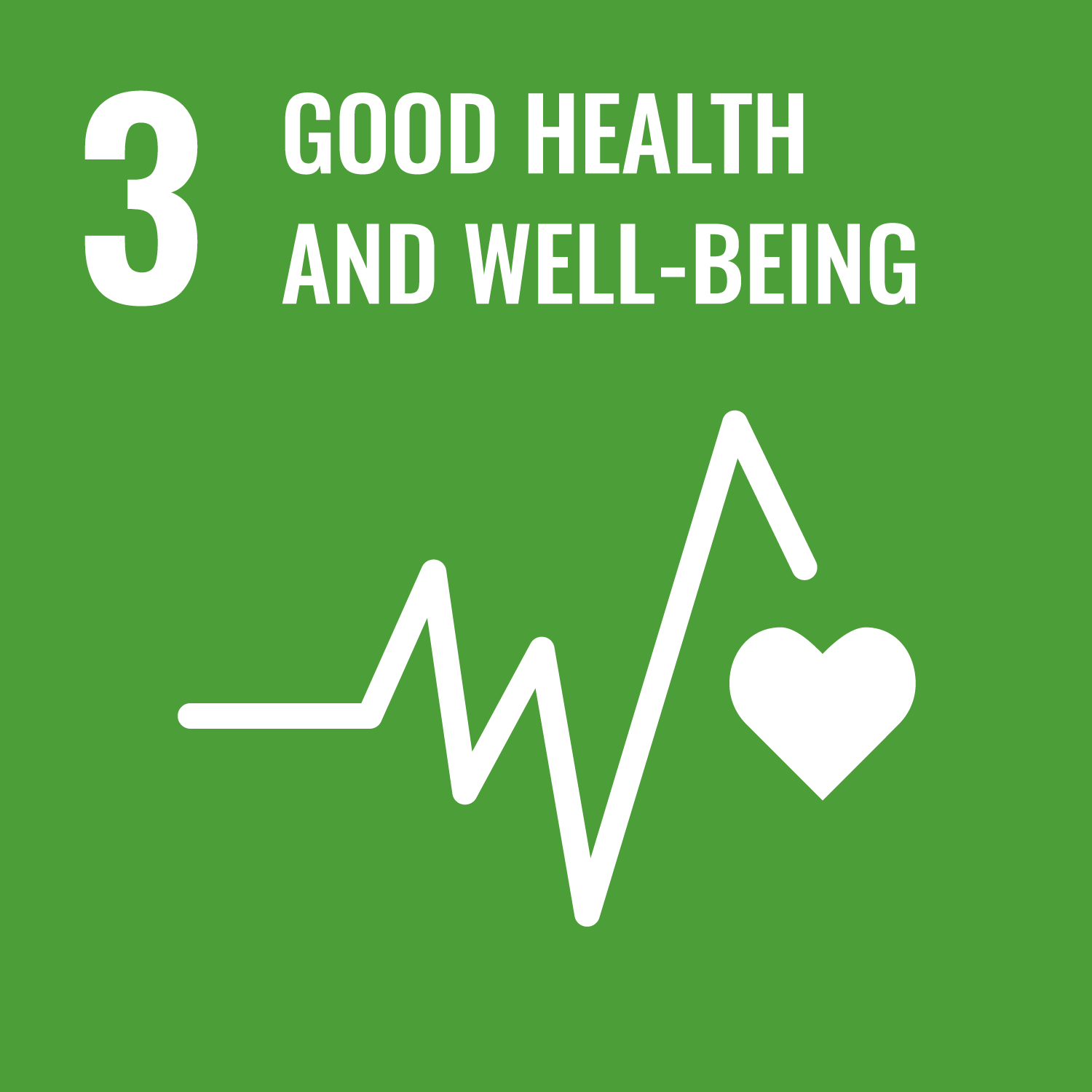SDG 3: Good Health and Well-being
Ensure healthy lives and promote wellbeing for all, at all ages.

SDG3 focuses on raising global health and wellbeing standards. This includes improving maternal and infant mortality rates, lowering rates of disease and mental health problems, and reducing the number of deaths, injuries, and illnesses caused by road traffic accidents, hazardous chemicals, pollution, and poor sanitation. It also targets universal access to healthcare.
Ensuring healthy lives and promoting wellbeing at all ages is essential to sustainable development. In particular, poor health threatens the rights of children to education, limits people’s economic opportunities, and increases poverty within communities and countries around the world.
In addition to being a cause of poverty, health is impacted by poverty and is strongly connected to other aspects of sustainable development, including water and sanitation, gender equality, climate change, and peace and stability. Meanwhile, better health and wellbeing brings significant economic benefits and is therefore integral to ending poverty and reducing inequalities around the world.
How CSC is making a positive difference?
The CSC certification plays a significant role in advancing Sustainable Development Goal 3 by actively promoting health and safety standards within the cement industry. Through its meticulous criteria, CSC ensures that companies prioritize the well-being of their employees and the surrounding community. This includes implementing robust health and safety management systems, as well as certifying these systems to ensure excellence in occupational health and safety practices. CSC-certified companies are committed to maintaining safety procedures, conducting risk analyses, and monitoring incidents to prevent accidents and protect workers’ health. Moreover, these companies provide access to medical treatment and clean drinking water, further contributing to the overall health and well-being of their employees and the communities in which they operate. By adhering to the M4 criteria of the CSC certification, companies not only prioritize occupational health and safety but also contribute to the achievement of SDG 3, which aims to ensure healthy lives and promote well-being for all at all ages
Where does it appear in the Technical Manual ?
M4.01 Health and safety management system
M4.02 Certified health and safety management system
How the cement and concrete industry is making a positive difference
The built environment lies at the heart of SDG3 through the provision of decent housing, clean water and sanitation, affordable energy, accessible healthcare, and good transportation links – all of which are vital components to health and wellbeing. The built environment is reliant on concrete’s sustainability characteristics, including its durability, widespread availability, and cost-effectiveness, to offer key resilience to natural disasters.
The industry also helps to reduce poverty – a key cause of poor health and wellbeing – and to raise living standards through the direct and indirect economic impact of its activities on the countries, regions, and communities in which it operates.
In its own direct operations, the industry has long recognised the importance of health and safety. It is a key priority of the GCCA, with a goal of zero-harm, and GCCA members annually report key health and safety performance indicators as part of their commitment to the GCCA Sustainability Charter. To support its members, the GCCA has published a Health Management Handbook.
As a heavy user of road transportation, promoting good road safety practices is another strand of the industry’s work to ensure a safe working environment and meet SDG3:6, which calls for a halving of global deaths and injuries from road traffic accidents. The GCCA is an active participant in the industry’s efforts to improve road safety, publishing the GCCA Road Safety Handbook for members.
In addition to managing the risks to physical health, there is growing recognition of mental health risks – particularly among men, who are less likely to access mental healthcare – with efforts to destigmatise and encourage openness about mental health challenges through the training of mental health first aiders.